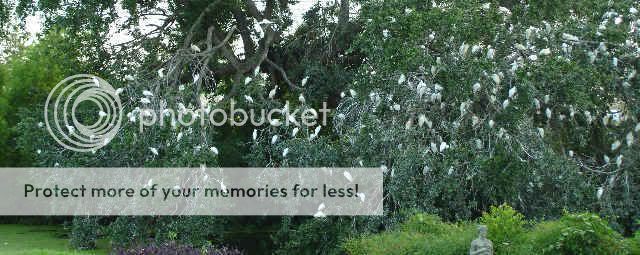
The cattle egret, also known as the buff-backed heron, is a white
bird that ranges in length from 19 inches to 21 inches. They have a
short, yellow bill. Their legs and feet are a light orange color.
They have a medium-size length neck. When it is breeding season,
the adult birds develop buff feathers on their heads, backs, and
breasts. Their legs and bills also become brighter in color.
Originally from Africa, the cattle egret is now distributed among
six different continents: Africa, Asia, Australia, Europe, North
America, and South America. In the United States, the cattle egret
can be found in every state except Indiana, New Hampshire,
Washington, West Virginia, and Wyoming. The birds have also taken
up a migratory pattern, which take them in the winter to Latin
America and the Caribbean. The egrets habitat consist of fields,
marshes, freshwater wetlands, pastures, livestock pens, swamps, and
air strips. The cattle egret can be found near cattle because it
eats the insects that associate with cattle.
Cattle egrets live in colonies and are very sociable. Colonies can
consist of several hundreds of birds living in one big tree. They
also nest with other types of birds. Cattle egret travel daily to
foraging areas singly or in flocks. The egrets follow cattle, wild
or domesticated feeding on the insects that are disturbed by the
cattle. These birds are very adaptable to the new environments.
The diet of cattle egrets consists of insects particularly
grasshoppers and they avoid bumble bees, wasps, and yellow jackets.
They expend less energy in catching their food by following cattle
and farm machinery and catching the insects that are flushed. In
aquatic habitats they eat frogs and fish. Captive egrets in zoos
are given smelt, mealworms, and crickets to eat.
During the mating season the adult birds start to display their
buff plumes upon their head, breast, and back. The male bird
collects materials for a nest; the female then creates the nest.
The pair mate while on their nest. About 2-6 eggs are laid. The
eggs are incubated for about 18-30 days. The mother gives an
additional amount of male hormones to the first eggs that are laid.
This supplement makes these chicks more aggressive. This may be the
mothers way to give an extra push for the survival of the first
born chicks. The first born chick may kill the younger ones when
competing for food.
Cattle egrets are not endangered or threatened species. In
fact, they are highly successful because they feed around large
grazing animals. These birds are common. Since the late 1800s these
birds have expanded across half the world.


